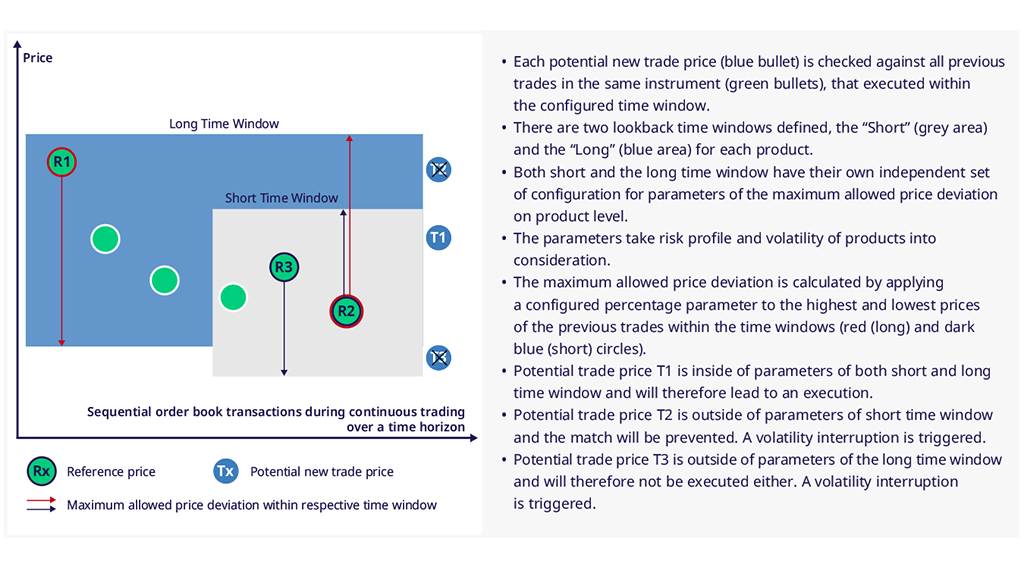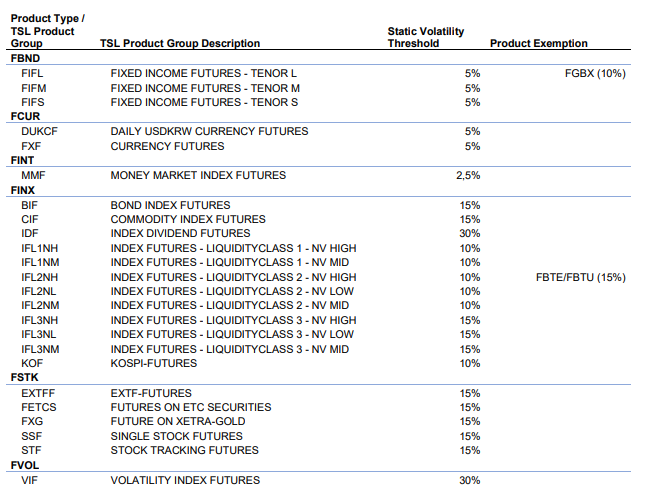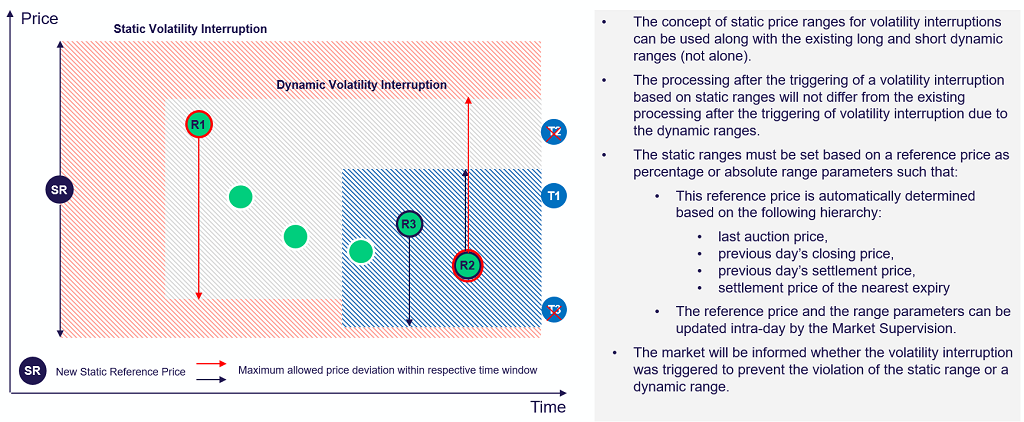Volatility Interruption Functionality
Dynamic Volatility Interruptions
The Eurex Volatility Interruption Functionality is a safeguard which aims to ensure market integrity and price continuity by preventing matching of incoming orders that would lead to an erroneous trade price and to stop sudden price cascades.
In the functional concept of the Volatility Interruption, the potential trade price of an incoming order is checked against all prices of previously executed trades in the same instrument within configured lookback time windows, the so called reference prices. In order to account for different liquidity scenarios, Eurex currently applies two time windows, a “short” and a “long” one, configured for each product together with the respective parameters for the allowed price deviation.
A Volatility Interruption will be triggered if the allowed price deviation is exceeded, i.e.:
- Potential trade price of an incoming order > Reference Price Low + maximum allowed price deviation or
- Potential trade price of an incoming order < Reference Price High - maximum allowed price deviation
The execution of the incoming order will be prevented and the affected instrument or all instruments of the affected product will be automatically moved from continuous trading to a volatility auction. The incoming order that triggered the volatility auction is written to the auction book, or in case of an IOC order, it is cancelled. Executions which happened before the volatility interruption was triggered, remain valid.
Eurex volatility auctions behave like normal Eurex auctions, market participants are able to submit, maintain or cancel orders without matching taking place. The Volatility Interruption along with its indicative auction price is available and published to the market.

Static Volatility Interruptions
With T7 Release 12.1, an additional trigger mechanism for Volatility Interruptions was introduced, which is based on static price ranges around reference prices defined by the exchange. This so-called static Volatility Interruption will be triggered once the allowed static price deviation is exceeded.
Reference prices for determining the static Volatility Interruption remain static over the trading day and will automatically update based on the following hierarchy:
- Last auction price (this includes volatility auction prices),
- Previous day’s closing price,
- Previous day’s settlement price,
- Settlement price of the nearest expiry
rice thresholds determining the static Volatility Interruption range around the respective reference price will be set for each Futures product grouped per TSL product group which are also applied for Transaction Size Limits at Eurex.
Price thresholds determining the static Volatility Interruption range around the respective reference price will be set for each Futures product grouped per TSL product group which are also applied for Transaction Size Limits at Eurex:

As an example: The EURO STOXX 50® Index Futures (FESX) based on an opening index level of 5.075,00 would be allowed to trade up to 5,582,00 over the trading day before the static Volatility Interruption will trigger an auction where Trading Participants may contribute to determine an auction price which will become the new reference price for the subsequent continuous trading phase.
Static Volatility Interruptions are activated as of 8 July 2024.

For further information please refer to Chapter 7.5 Volatility Interruption in the Functional Reference.
